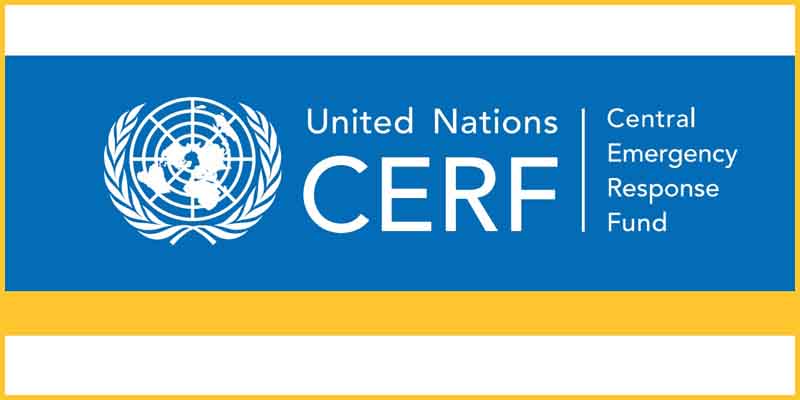- World
- Mar 07
UN’s Central Emergency Response Fund (CERF)
• Amid deep cuts to global humanitarian funding, the UN’s Central Emergency Response Fund (CERF) allocated $110 million to neglected crises across Africa, Asia and Latin America.
• Tom Fletcher, UN’s top aid official, said that more than 300 million people urgently need assistance. But funding has been falling annually, and this year’s levels are projected to drop to a record low.
• One third of the CERF money will support Sudan and neighbouring Chad, which is home to many uprooted Sudanese.
• The funds will also bolster the aid response in Afghanistan, the Central African Republic, Honduras, Mauritania, Niger, Somalia, Venezuela and Zambia.
• Part of the allocation will go towards life-saving initiatives to protect vulnerable people from climate shocks, too.
• Funding cuts are already significantly constraining the humanitarian community’s efforts to provide assistance to those most in need.
• UN agencies and partners on the ground are urgently reprioritising programmes to ensure communities and areas most in need can be reached.
• Twice a year, CERF — the UN global emergency fund managed by the Office for the Coordination of Humanitarian Affairs — allocates resources for underfunded emergencies as a global alert to spotlight the need for additional funding from Member States, the private sector and others.
• In late 2024, $110 million was disbursed to help more than three million people in underfunded emergencies in Burkina Faso, Burundi, Cameroon, Ethiopia, Haiti, Malawi, Mali, Mozambique, Myanmar and Yemen.
• This year, the humanitarian community is seeking nearly $45 billion to reach 185 million of the most vulnerable people caught up in crises worldwide. To date, just 5 per cent of this funding has been received, leaving a gap of more than $42 billion.
Central Emergency Response Fund (CERF)
• The Central Emergency Response Fund (CERF) is a humanitarian fund established by the UN General Assembly in December 2005 and launched in March 2006
• It is one of the fastest funding instruments available to help people affected by crises.
• CERF seeks to enable more timely and reliable humanitarian assistance to those affected by natural disasters and armed conflicts.
CERF’s objectives:
i) To promote early action and response to reduce loss of life.
ii) To enhance response to time-critical requirements.
iii) To strengthen core elements of humanitarian response in underfunded crises.
• CERF’s rapid response window allows country teams to kick-start relief efforts immediately in a coordinated and prioritised response when a new crisis emerges.
• The Emergency Relief Coordinator manages CERF on behalf of the UN Secretary-General and is supported by the CERF secretariat, which ensures that funds are allocated properly, disbursed in a timely manner, and that the use of funds is reported appropriately and transparently.
• Since its creation by the UN General Assembly in 2005, and with generous contributions from 130 Member States and observers, as well as other donors including private individuals, CERF has assisted hundreds of millions of people with some $9.6 billion across more than 110 countries and territories. This includes $3.3 billion to underfunded crises. CERF has an annual funding target of $1 billion.
• CERF is the leading global humanitarian funding tool for responding to climate-related humanitarian emergencies. To strengthen this function, CERF launched its Climate Action Account at COP28, offering a quick, efficient and impactful avenue for climate-related humanitarian finance.
• It aims to assist the world’s most vulnerable communities facing the consequences of the climate crisis, including through anticipatory action and life-saving projects that also build people’s adaptation and resilience.
Manorama Yearbook app is now available on Google Play Store and iOS App Store

